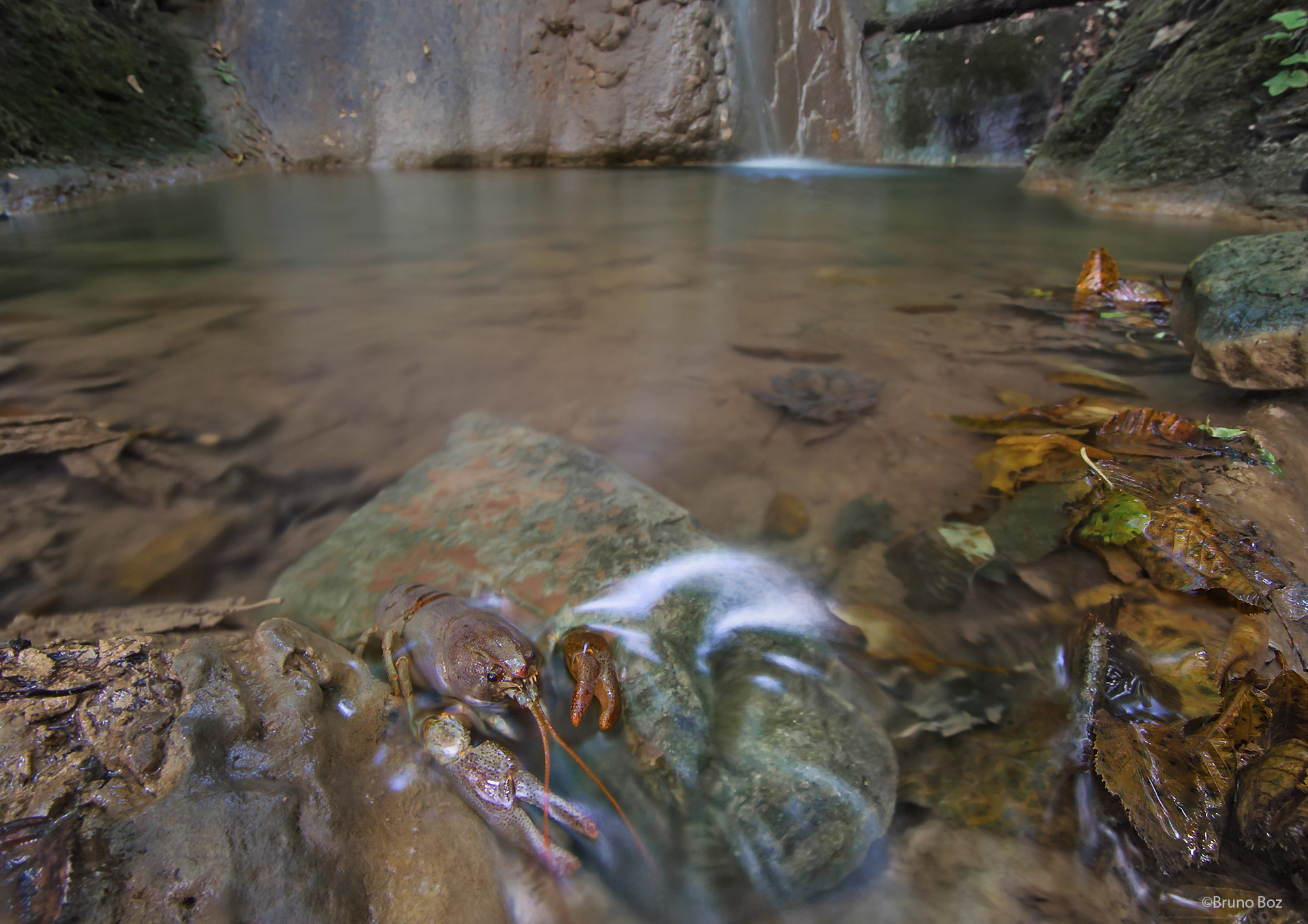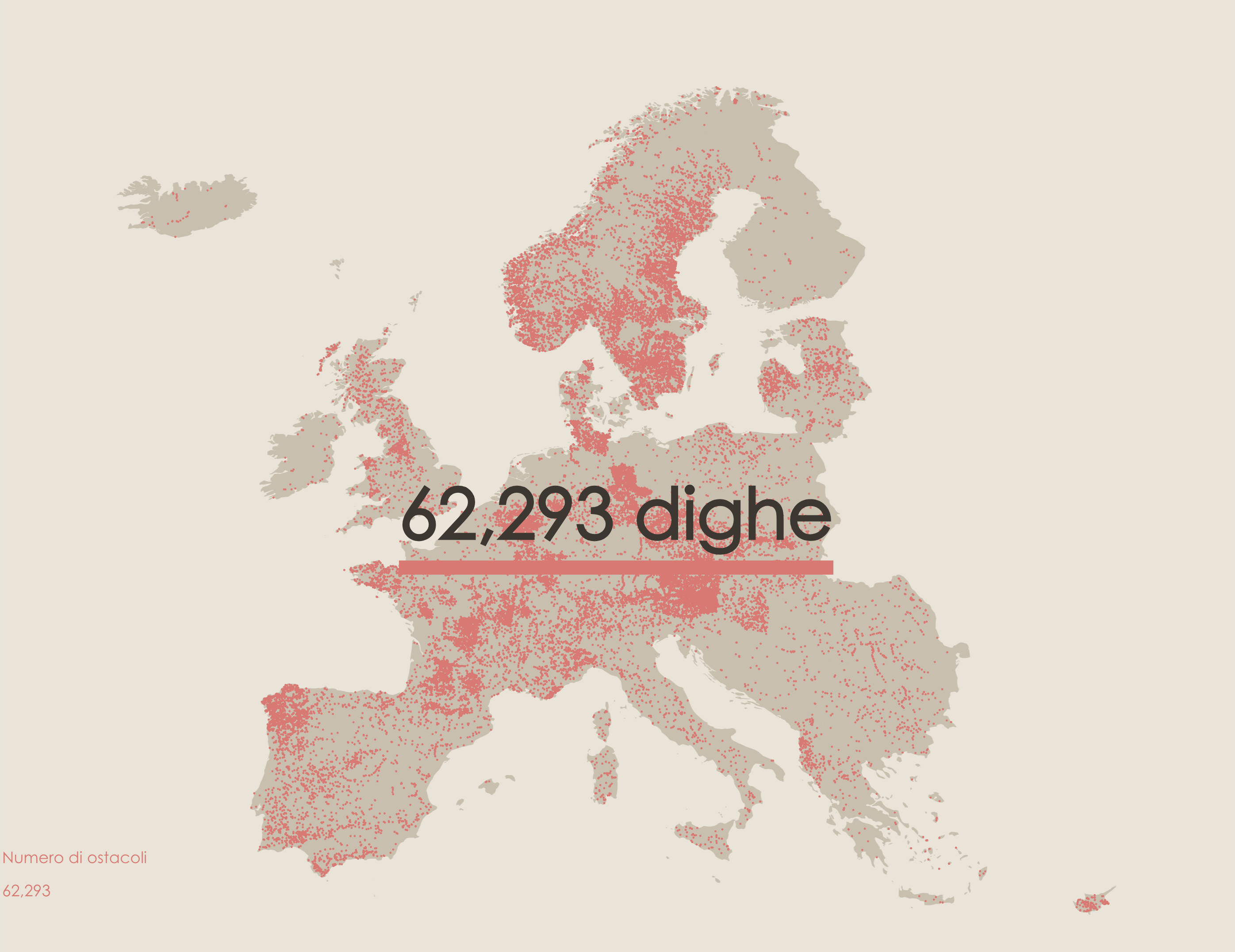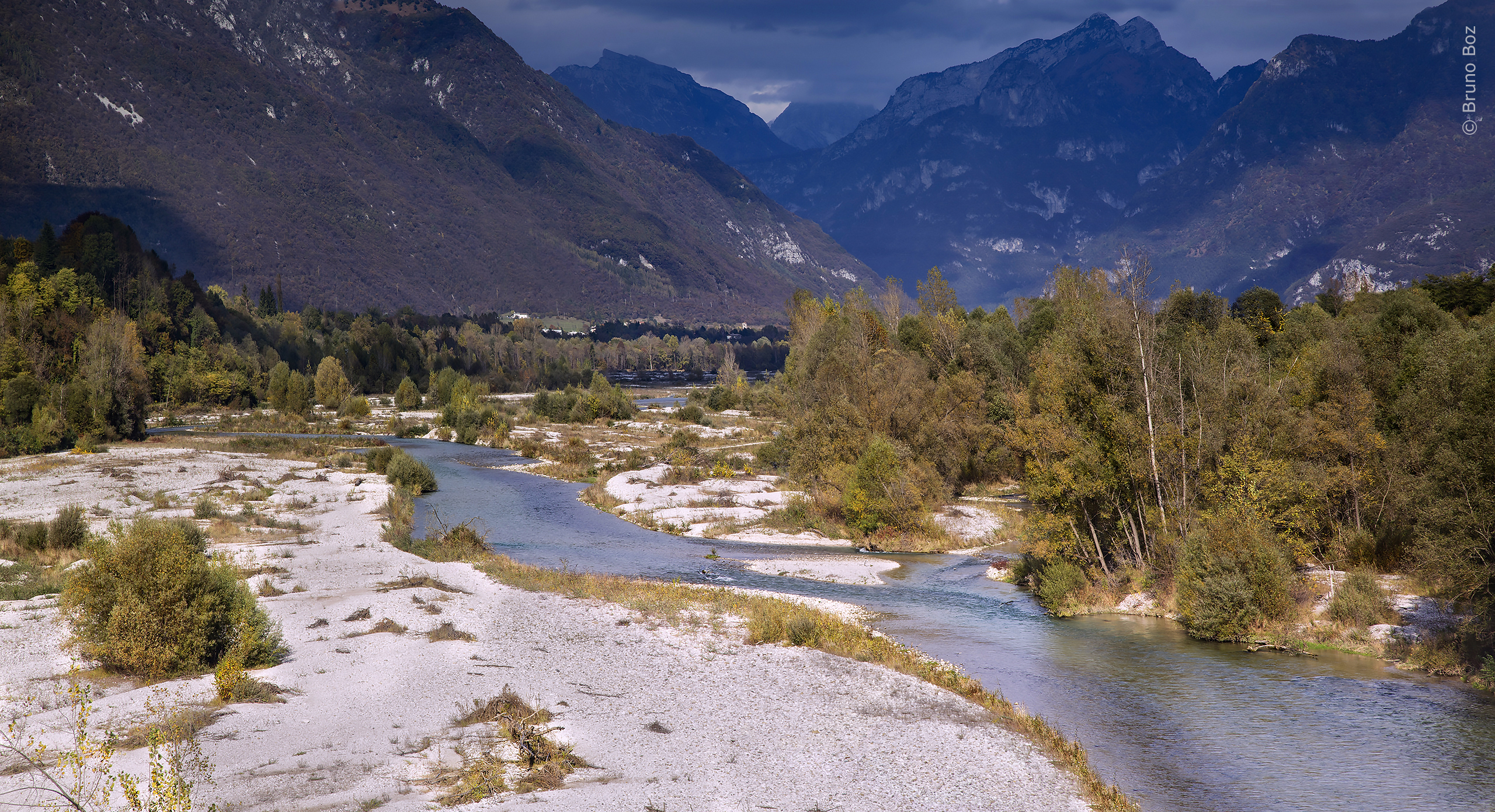
Photo credits: Andrea Goltara e Bruno Boz
RIVER RESTORATION
River restoration is an integrated set of actions aimed at bringing a watercourse, with the territory most closely connected to it, the river corridor, to a more natural condition, by restoring its geomorphological, physicochemical, and biological characteristics.
A more natural watercourse not only has greater environmental value, but typically provides many key ecosystem services, e.g., reduces flood risk, provides water of better quality and increased groundwater recharge, scenic value, and opportunities for recreation.
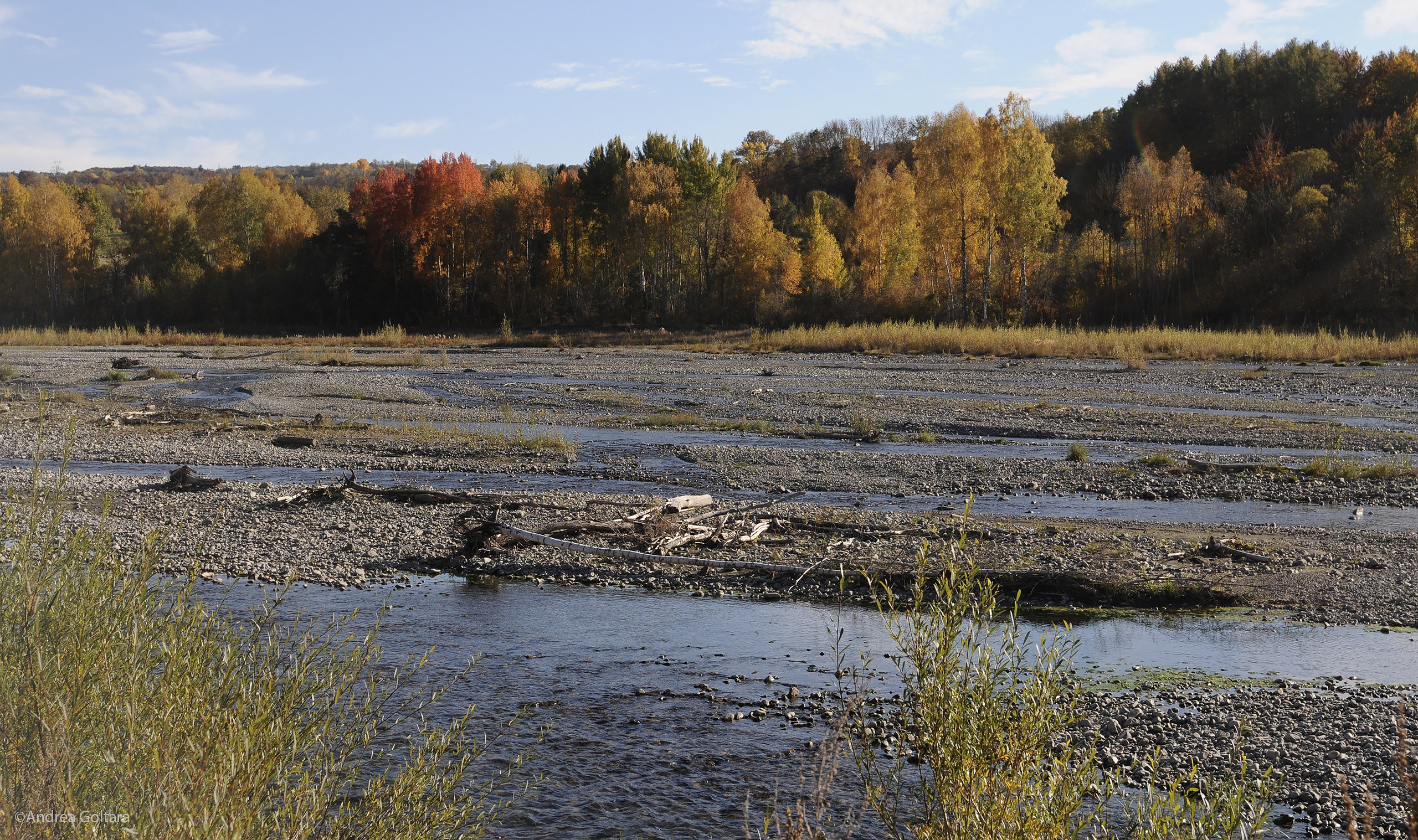
River restoration relies not only on structural interventions, such as the removal or modification of infrastructure along a watercourse, but also on management or planning ones, and therefore requires the application of a truly integrated approach, where the active participation of the social and institutional parties involved plays, inevitably, a key role.
These interventions often require medium to long-term planning and adequate funding, that not necessarily need to come only from public sources. For example, private individuals, intervening on their own infrastructure or adapting their own management methods, consistently with river basin planning, can play a key role in contributing to the achievement of quality objectives. Stakeholders along the river corridor, however, often have conflicting objectives. Therefore, to develop a river restoration project that maximizes environmental and social benefits, it is necessary to seek concerted solutions through participation and negotiation processes. Such a path clearly cannot go without an adequate understanding of the natural dynamics and functions typical of the specific watercourse.
PROCESSES AND FUNCTIONS OF NATURAL RIVERS
Natural watercourses are dynamic elements of the territory that (when anthropogenic pressures still allow) continuously evolve morphologically, under the action of the water and sediment flows and according to the specific boundary conditions. It is precisely this spatial and temporal variability of forms that generates and renews river habitats: ensuring such dynamics and the spatial and temporal connectivity of processes is therefore a prerequisite for river ecosystems to maintain a high state of quality and provide important ecosystem services.
The biological communities of rivers flowing in floodplains – and more generally in the portions of the basin where they are not confined by slopes – are strongly influenced by periodic changes in water levels, which cause streams to flood surrounding areas and to mobilize nutrients and particulate material between the floodplain and the riverbed (flood-pulse concept): floods, with their sediments, in fact fertilize floodplains and create favourable habitats for aquatic and terrestrial fauna.
The availability of floodplain areas and the periodic advancing and receding of waters thus increase ecosystem productivity and maintain biodiversity.
Protecting and restoring floodable areas and stream mobility spaces is also a pivotal element of integrated flood risk management strategies, for which “giving space back to rivers” is often the most effective way to hold together ecological needs and risk management.
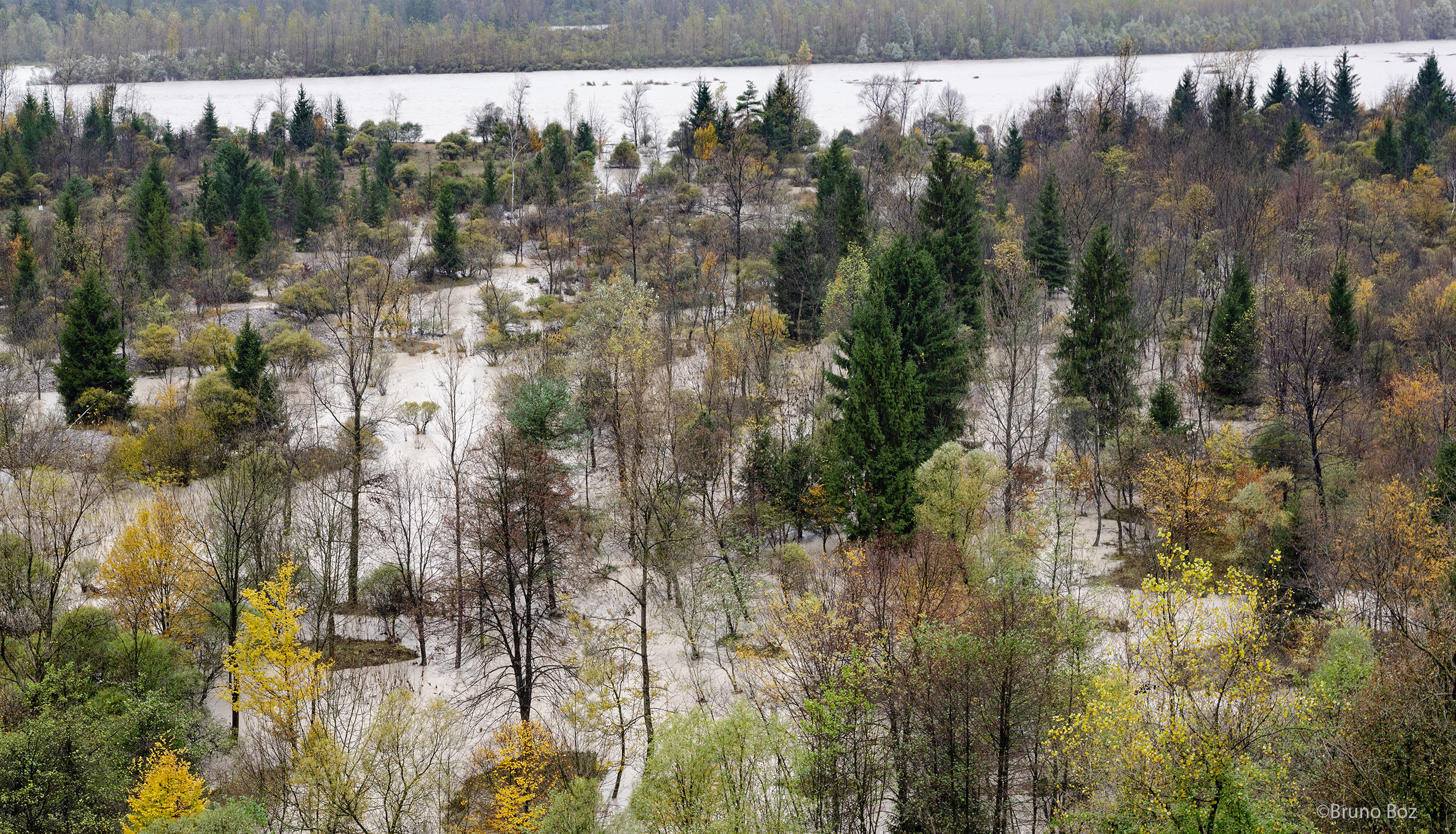
In addition, ensuring that sediments can flow from upstream to downstream and be rearranged by the river dynamics allows both the conservation of river ecosystems and the reduction of risks to human infrastructure related to sediment deficits (such as destabilisation of bridges due to riverbed incision). Allowing a sufficient presence and flow of wood is also very important in river systems, as it interacts with sediment erosion and deposition processes, creating physical habitats (morphological units) necessary for the different life stages of freshwater animal and plant species.
Alteration of longitudinal connectivity has adverse effects on aquatic communities because it disrupts the upstream-downstream connection between ecosystems: a watercourse can be considered a succession of ecosystems that gradually fade into each other, interconnected with surrounding terrestrial ecosystems, and in which aquatic communities and river metabolism are conditioned not only by local conditions but also by processes occurring in upstream stretches (river continuum concept). That is, the different communities have adapted to live with certain water flow, geomorphological, and context characteristics that are typical of each river segment, but they are not independent of the preceding or succeeding river stretches: interruption of physical continuity between portions of the river can thus result in adverse effects in other upstream or downstream stretches. Longitudinal connectivity is also essential for those species, particularly fish, that need to move, either from downstream to upstream or from upstream to downstream, for needs related to different activities and life stages.
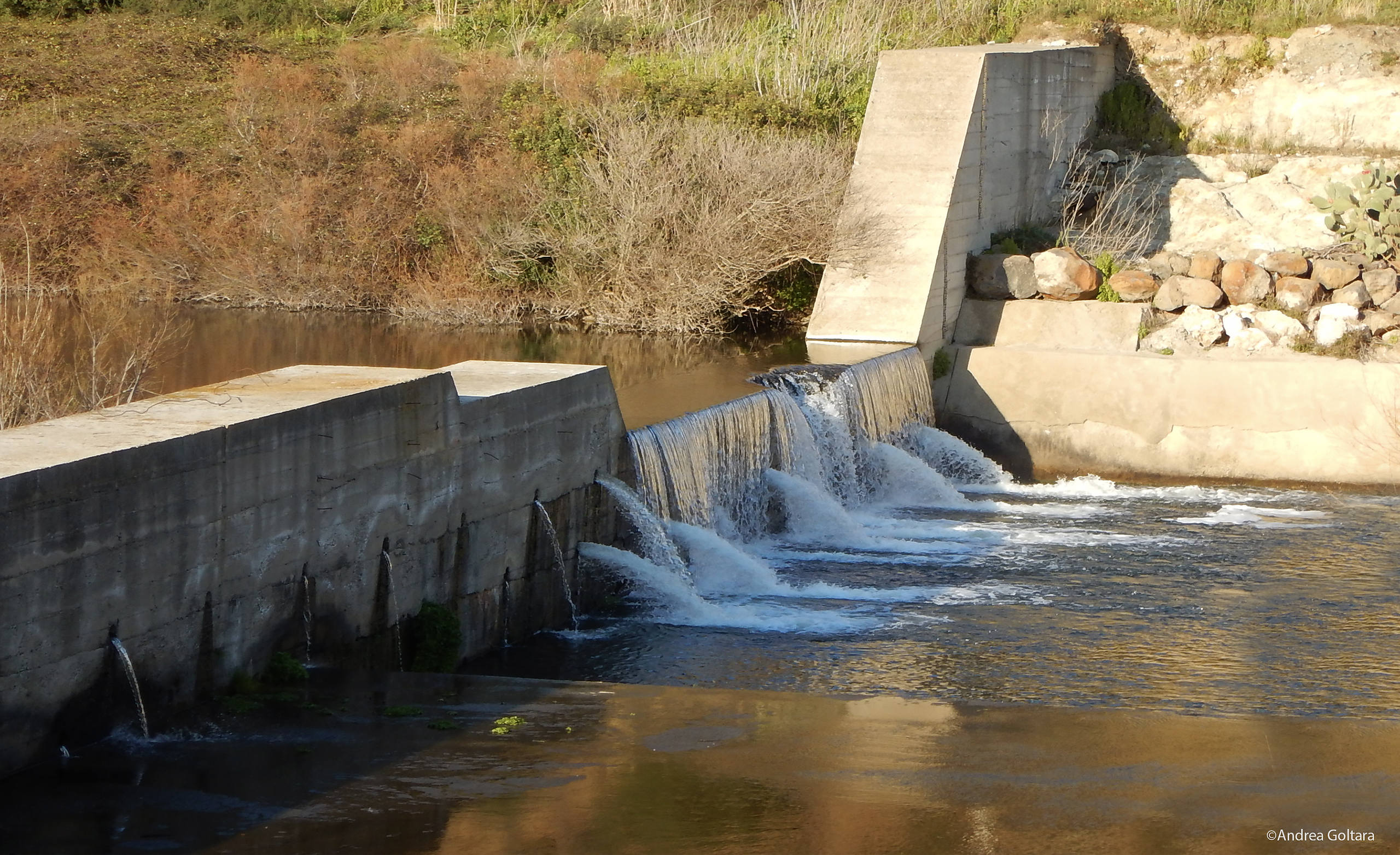
The availability of a sufficient lateral mobility corridor around the riverbed is then critical to ensure that the processes and shapes typical of a given morphological configuration are maintained. In channelized watercourses, for example, i.e., where the ratio of width to depth of the riverbed is significantly reduced, alteration of the solid transport dynamics can result in variation in the type and extension of bars or even their total disappearance, with even a very marked change in the morphology of the stretch and thus the associated habitats.
Geomorphological shaping processes interact with vegetation that helps define river forms but at the same time is influenced by morphological evolutionary processes. In fact, the various morphological units present in a riverbed and floodplain are characterized by certain flood frequencies, leading to the selection of specific plant associations adapted to local hydraulic conditions.
The presence of live vegetation, as well as large woody debris, in turn influences local evolutionary processes, for example by producing bank erosion or the creation of pools in certain areas and stabilizing others or by promoting the accumulation of sediment and thus the formation of bars.
The impact of non-selective vegetation removal therefore directly affects the morphological evolution of streams and consequently the environmental diversity of the riverbed, which may become more uniform in the absence of the vegetation-induced disturbances.
The presence of vegetation also directly ensures the biodiversity of riparian ecotones and a number of basic functions, such as trophic supply (leaves and branches) supporting the food webs of aquatic organisms, shading and transpiration, with effects on water temperature and oxygenation, filtering action against sediment (and associated pollutants) carried by soil runoff, as well as nutrient removal capacity, and natural reduction of stream bank erosion.
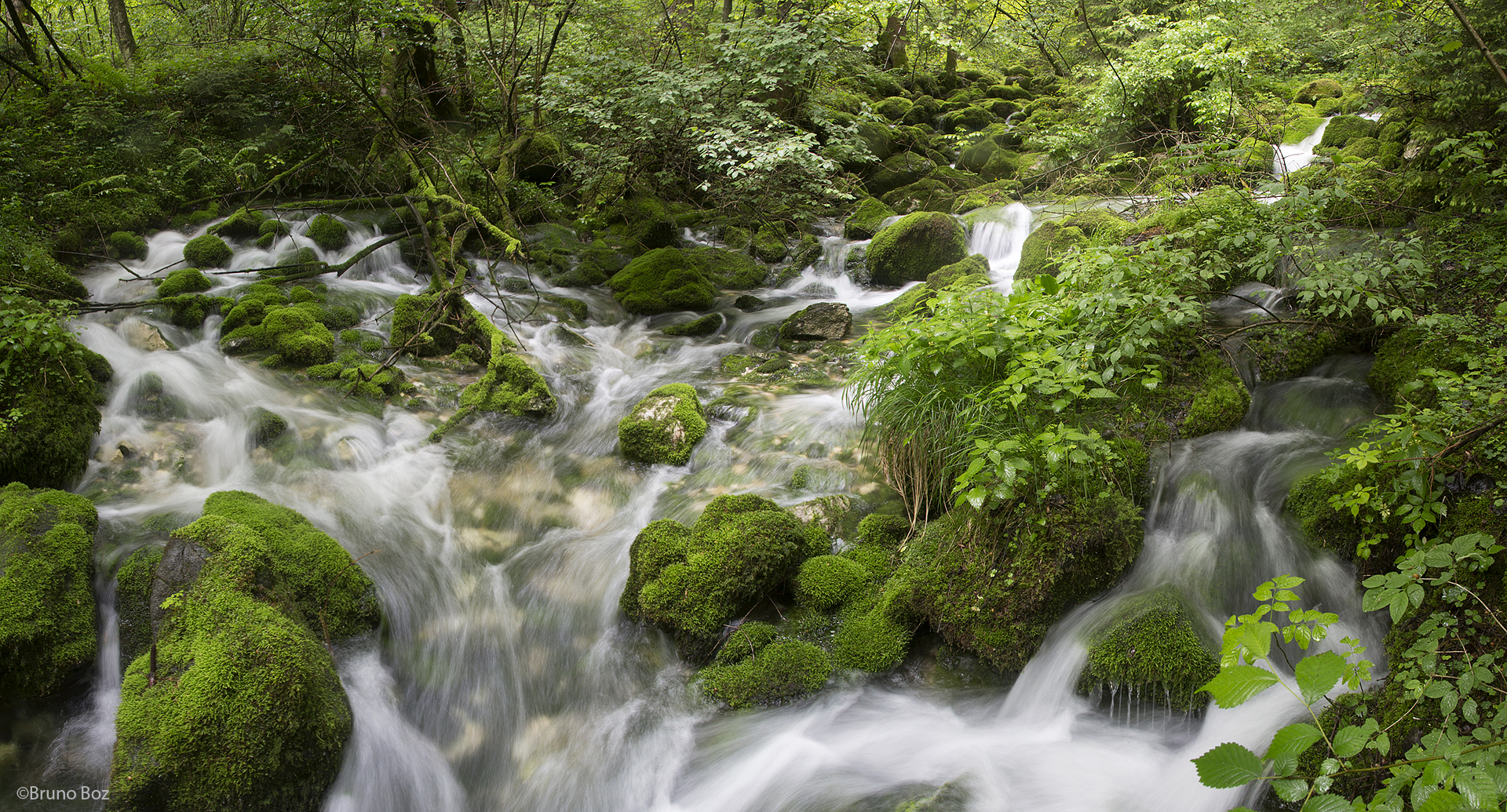
RESTORING RIVER CONNECTIVITY: A KEY ELEMENT OF RIVER RESTORATION
From what has been said about river processes, it is clear that restoring river connectivity is typically a cross-cutting issue in the restoration of all quality elements of a watercourse. The large amount of works built to meet anthropogenic uses have fragmented the river network, isolated rivers from neighbouring land, and often from groundwater as well. Restoring a river implies recovering as much as possible its natural functions and processes, which are highly dependent on its connectivity. To achieve this goal, connectivity must be restored longitudinally (water and sediment must be free to flow from upstream to downstream and fauna to move from upstream to downstream and vice versa), laterally (ensuring periodic floodplain inundation and lateral mobility of riverbeds), vertically (maintaining interactions between surface runoff and groundwater), and temporally (ensuring the natural evolution of river dynamics over time).
To know more on connectivity:
On the freeflowingrivers.eu website, created by CIRF with Wetlands International Europe, you can find insights and data on different connectivity threats, ecological impacts and future scenarios, at European and international levels.
Photo: www.freeflowingrivers.eu
HOW TO ASSESS THE HEALTH STATUS OF A RIVER AND HOW TO IMPROVE IT
According to the EU Water Framework Directive (WFD), in order to give an objective assessment of the ecological status of a river we need to measure and evaluate the deviation from reference conditions (i.e., those that the specific watercourse would have in the absence of anthropogenic alterations) of a number of physico-chemical, biological and hydromorphological elements. In addition, there are other components, not explicitly considered (or only partially) by the WFD, that contribute to the ecological integrity of a watercourse and can be the subject of specific restoration efforts, such as thermal, wetland or other biotic community conditions (birds, mammals, etc.).
Once the status of the river and the causes of degradation of the different quality elements (i.e., the anthropogenic pressures that cause their alteration) are understood, an action program aimed at reversing the quality degradation and returning the river to better ecological conditions needs to be defined.
According to the different elements under the WFD, here are some examples of how action can be taken:
- physico-chemical elements: causes of degradation and lines of action
- hydromorphological elements: causes of degradation and lines of action
- biological elements: causes of degradation and lines of action
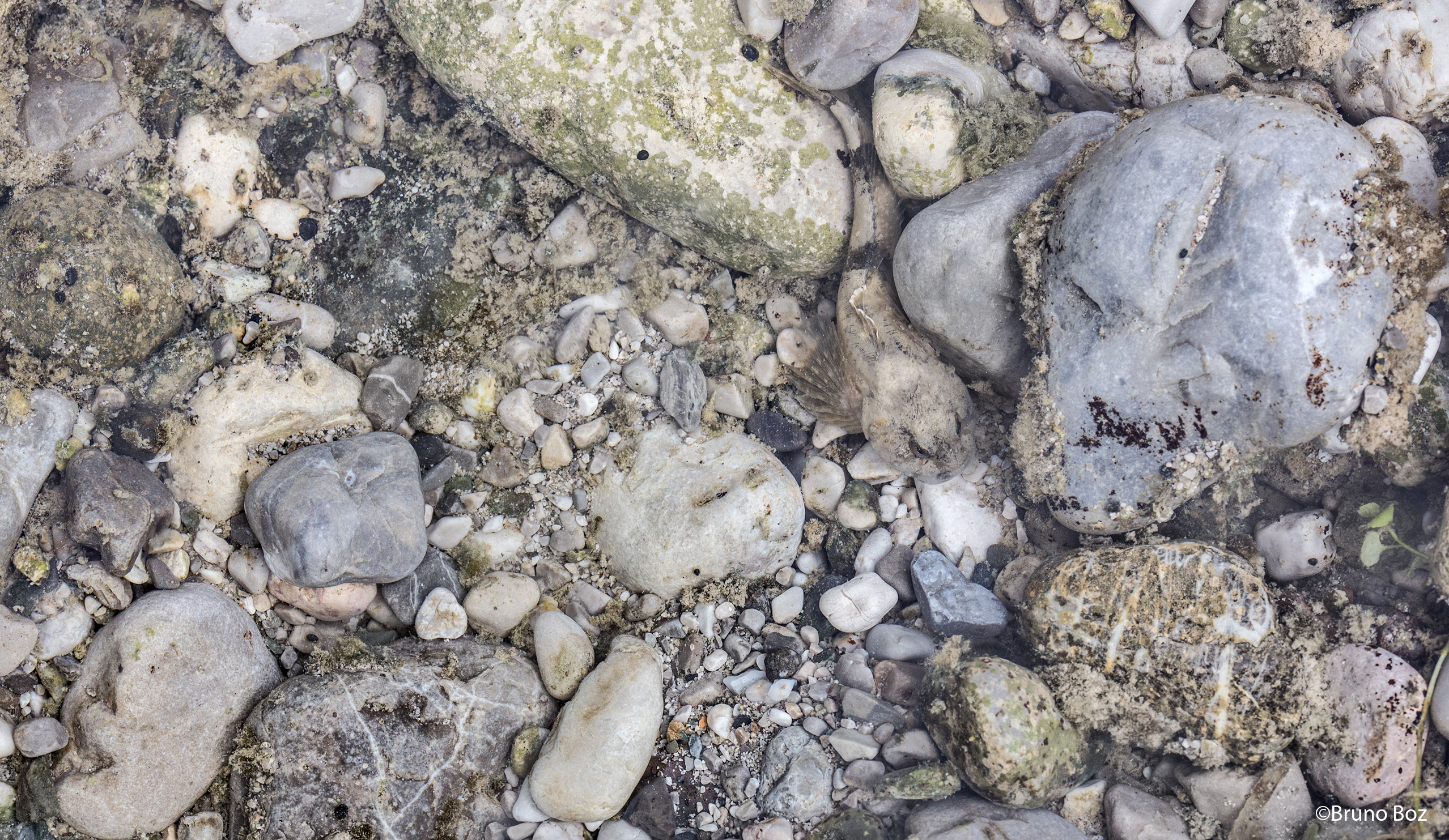
PHYSICO-CHEMICAL QUALITY ELEMENTS
Causes of degradation
The degradation of water quality in our rivers has multiple causes, generally due to two “macro-categories” of pressures:
- inputs, localized or diffuse, of pollutant loads that change the physical (e.g., oxygenation) or chemical (pollutant concentrations) conditions of water and sediments;
- hydrological alterations, which often affect water quality degradation, amplifying the effects of the pollutants introduced: in fact, the same load can have much more severe impacts if introduced into a river with significantly reduced flows.
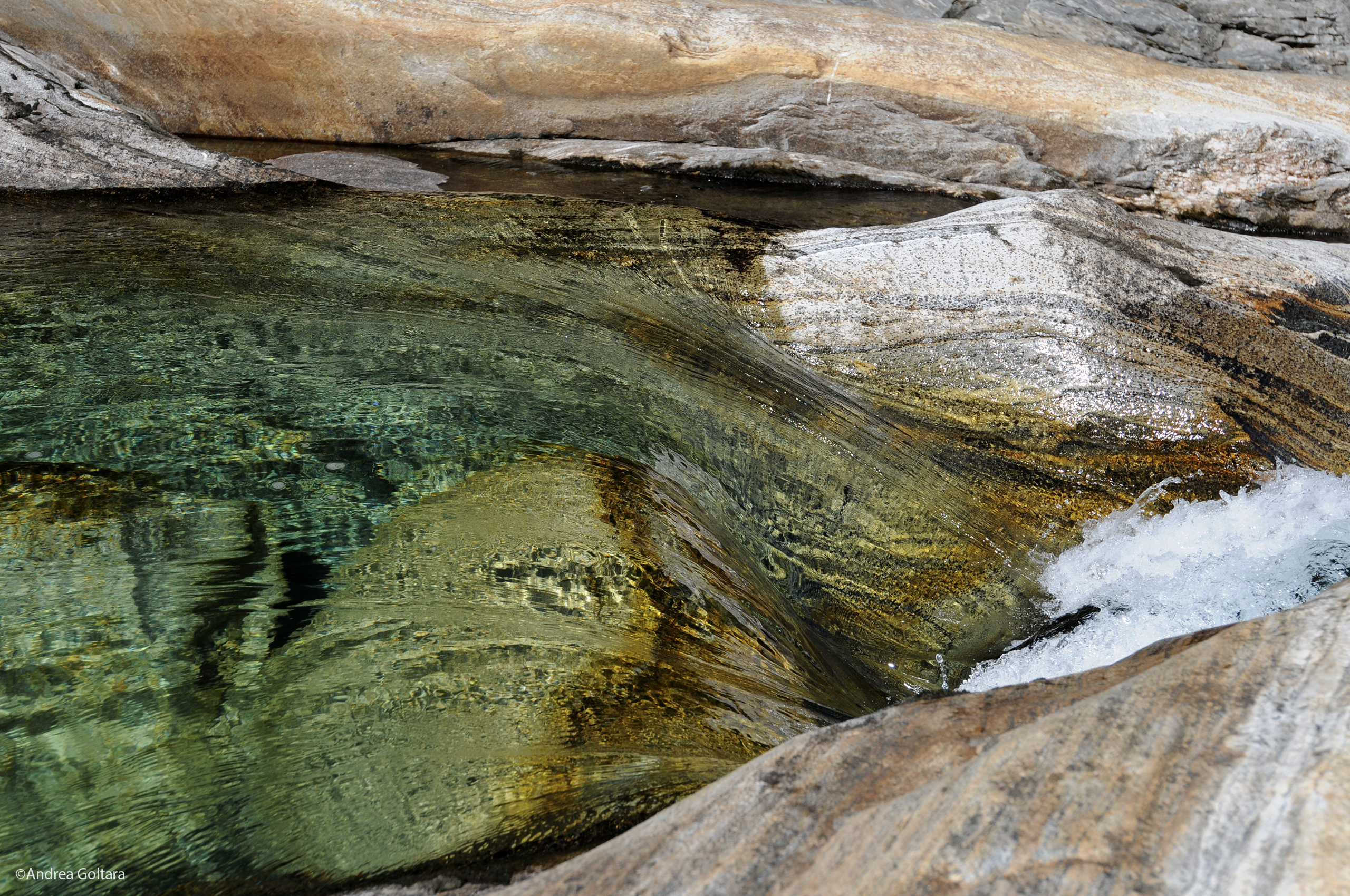
Lines of action
In addition to the actions traditionally put in place to improve water quality (reduction of point loads through collection of urban and industrial wastewater and purification with conventional systems and reduction of diffuse pollution, e.g., through improved agricultural practices), the following can be implemented:
- Interventions to restore the self-purification capacity of watercourses: restoring buffer strips in the riparian zone (i.e., a strip of vegetation between the riverbed and agricultural fields), ensures the reduction of pollutant loads, particularly nutrients of agricultural origin; but in general, river channels that are morphologically diversified and in connection with underground flows ensure that the biogeochemical cycles that preside over the transformation of pollutants are more effective. The restoration or reconstruction of wetlands connected to the watercourse can also be a solution that not only increases biodiversity in floodplains but also increases their pollution removal capacity.
- Actions to reduce hydrological alteration can help to increase the natural dilution of pollutant loads, although this is a proper solution only for some categories of pollutants (e.g., dilution is not reducing the environmental risk linked to persistent and bioaccumulative substances)
Insights:
watch CIRF’s video on vegetation management in natural watercourses
HYDROMORPHOLOGICAL QUALITY ELEMENTS
Causes of degradation
The morphological forms and processes of rivers are severely altered by a wide range of infrastructural and management interventions:
- the construction of works that physically impede river dynamics (levees, bank protections, weirs, etc.);
- direct alteration (reshaping of riverbeds, channelization/rectification);
- interventions that alter the main variables that regulate morphological dynamics, particularly water flows and sediment loads and flows.
Several interventions actually belong to more than one category and result in different types of impacts, as in the following examples.
Construction of dams and weirs: the presence of a transversal obstacle interrupts, more or less, depending on the type of work, solid transport, creating a deficit of sediment downstream, particularly coarse sediment that contributes most to river morphology. If the barrier is associated with a diversion that also alters flood flows, in addition, the downstream sediment transport capacity is reduced, with knock-on effects on stream form and dynamics.
Bank protections: they prevent the watercourse from moving laterally, as it would be in their nature (with the exception of naturally confined rivers), and reduce sediment supply from the banks. They are often associated with narrowing and channelization that impose a different morphology in comparison to what the river would naturally develop.
Sediment extractions in the riverbed: in Italy massively implemented especially in the 1950s-60s but still active in many catchments even today under the name of emergency flood-risk reduction interventions, they have determined devastating and often irreversible effects on the morphological conditions of watercourses.
They are in fact responsible for riverbed incision processes (often by several metres) downstream the intervention, but also upstream (regressive erosion), often associated with narrowing and changes in morphological configuration, with consequent effects at even very large spatial and temporal scales, ranging from lowering of the water table, to lack of connectivity of the riverbed from the floodplain, to coastal erosion.
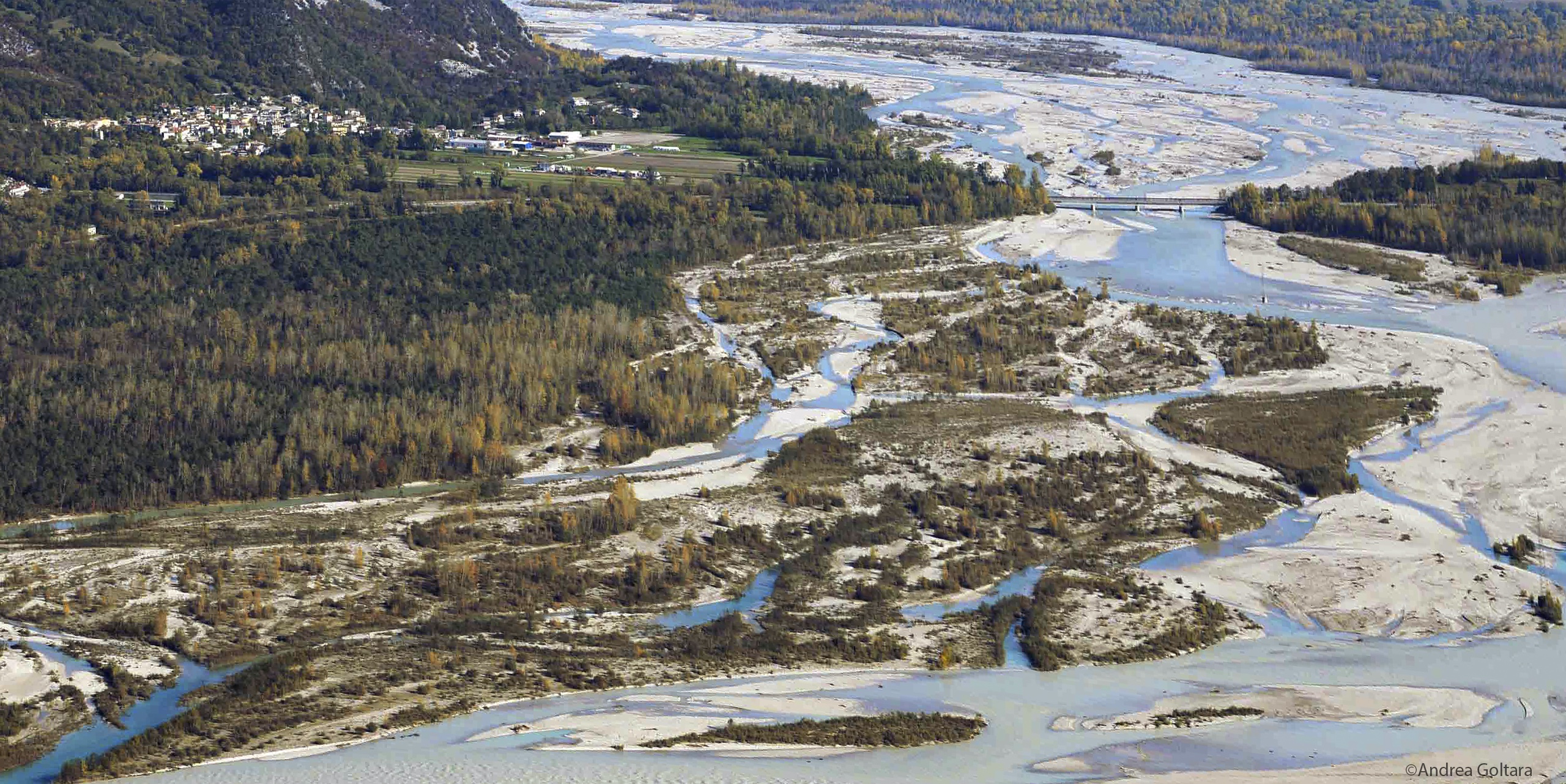
Lines of action
Actions aimed at improving hydromorphological quality are basically focused on reducing the artificialization of river systems and restoring more natural hydromorphological processes (reactivating lateral dynamics and solid transport, restoring formative flood events…). Concretely, this translates, for example, into:
- giving back space to rivers through the removal or retreat of levees/bank protections that create more damage than benefit;
- recovering the longitudinal connectivity of sediments by removing weirs or dams where not essential, or by improving the management of reservoirs and retention weirs, also by mechanically re-injecting sediment into the riverbed downstream;
- restoring river forms by changing the way riverbanks are maintained, in particular by avoiding dredging and sediment removal, except when clearly justified by increased risk and required by a sediment management program (for many of the interventions currently carried out, this justification is totally lacking);
- restore riparian vegetation and ensure a more natural wood supply in the riverbed, again avoiding widespread clear-cuts unless fully justified;
- restoring a more natural hydrological regime, particularly by ensuring adequate formative floods (those that influence most the shaping of river forms).
In hydromorphological restoration interventions, it is appropriate to “let the river do the work” as much as possible, restoring conditions that allow for more natural morphological dynamics, rather than directly intervening to “rebuild” certain forms in the riverbed. However, in low-energy conditions (very low gradient streams), or particularly altered conditions (e.g. where upstream sediment sources are largely disconnected), or where it is necessary to achieve a result in shorter times, it is possible to intervene in a more direct and localized way. However, it must be taken into account that it will then be the stream itself that will redefine its forms over time.
BIOLOGICAL QUALITY ELEMENTS
Causes of degradation
Given the close dependence of aquatic organisms on water quality, the causes of degradation considered for this component also affect, to a greater or lesser extent, the biological quality of streams, although this is not always the main pressure factor. The same can be said of the pressure factors that lead to a degradation of hydromorphological quality: alteration of in-stream forms and the processes that maintain them over time, as well as hydraulic conditions related to in-stream flows, alter habitats, leading to the loss of organisms adapted to that type of habitat and often favouring other non-native species. Many hydraulic works, then, tend to homogenize the riverbed and banks to shape as regular sections as possible, with a net loss of habitat types and consequently of biodiversity; not only different species than expected under reference conditions then, but also fewer species and fewer individuals.
Another pressure not to be underestimated is related to anthropogenic interventions on the thermal regimes of water, which often induce a disruption of biological communities, even in rivers that are morphologically little altered.
As mentioned, then, another effect induced by many hydraulic works is to create real physical barriers that prevent the movement of organisms during fundamental phases of their life cycle; the most obvious example is the inability of migrating fish fauna to cross weirs or dams. However, even species that do not need to migrate from the sea to rivers or vice versa need to move for feeding, reproduction, and refuge needs. And for small species even small obstacles such as a sill can be impassable.
With respect to these degradation factors, it is useful to point out a rather significant and often underestimated aspect: impacts related to artificialisation are generally the most persistent and impactful on biological communities.
In addition, the biological quality of streams is also impacted by direct pressures on biological communities: disturbance by anthropogenic activities at sensitive stages of life cycles; accidental or intentional release of invasive alien species.
Lines of action
- habitat restoration interventions where the conditions for their natural regeneration cannot be created: introduction of sediment and timber into the riverbed, diversification of banks, direct creation of pools and bars, restoration of wetlands;
- reconnection of secondary channels or other critical habitats where these do not naturally recreate over time;
- reintroduction of species: reforestation, restocking…
- direct interventions for the containment of invasive species that can affect both vegetation (selective cutting…) and fish fauna (targeted control/eradication campaigns…).
